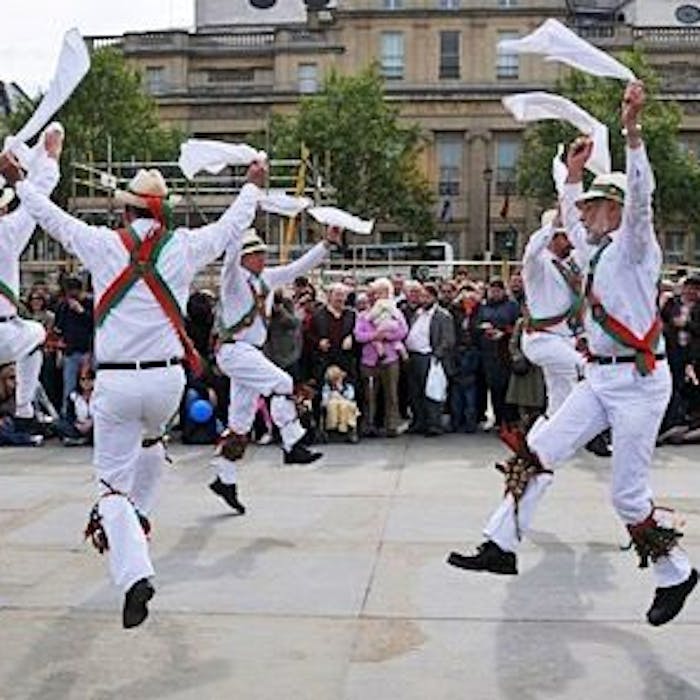
Morris Dancing - a May-time tradition
Morris dancing, an English folk tradition particularly associated with May Day, is based on rhythmic stepping and the execution of figures by a group of dancers, usually wearing bell pads on their shins to musical accompaniment. Implements such as sticks, swords and handkerchiefs may also be wielded.
The earliest known English mention of Morris dance was in 1448, recording payment to Morris dancers by the Goldsmiths' Company in London.
It was probably pagan in origin, because many of the dances tell the stories of a battle against nature, and dances were performed on days significant to pagans, such as the beginning of summer. It is popularly used during May Day celebrations, often with dancers circling a maypole, to symbolically banish the dark of winter.
The dancing was adopted into church ceremonies throughout the Middle Ages, and it became popular in the Tudor courts, especially under Henry VII and Henry VIII. 'Court Morris' was an elaborate affair with expensive costumes. By the mid-17th century, the working peasantry took part in Morris dances, especially at Whitsun. However, Oliver Cromwell suppressed Whitsun ales and similar festivals, and Morris Dancing fell out of favour with the nobility.
Morris dancing declined further during the urbanisation of the Industrial Revolution. It may have been lost to time altogether had it not been documented by musician and collector Cecil Sharp, who traveled England during the late 19th and early 20th centuries, collecting folk dances. Sharp's books revived interest in Morris dance, and Morris began to be taught in some schools. The Morris Ring, an umbrella group for Morris dancing, was founded in 1934. In the 1950s and especially the 1960s, there was an explosion of new dance teams.
A group of Morris dancers is called a side, and most dances have 6-8 dancers on the floor at a time. Traditional sides are led by a Squire who arranges performances. Under the Squire is the Foreman, who teaches the dances. Then the Bagman serves as secretary.
There are six main styles of Morris dance still practiced in England today: Cotswold, Molly, Border, Northwest Clog, Longsword, and Rapper. Each has a unique flavour and tradition. Morris bands utilise traditional instruments (concertina, fiddle, melodian, accordion, pipes, tabor) and are percussion-driven. Musicians often dress to match the dancers and are an integral part of the performance.
Further reading
Links to external websites are not maintained by Bite Sized Britain. They are provided to give users access to additional information. Bite Sized Britain is not responsible for the content of these external websites.
